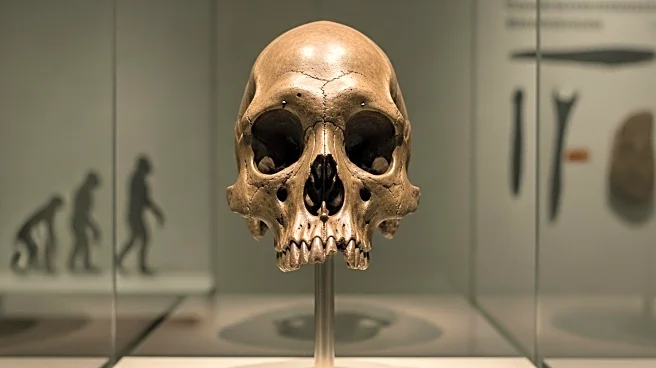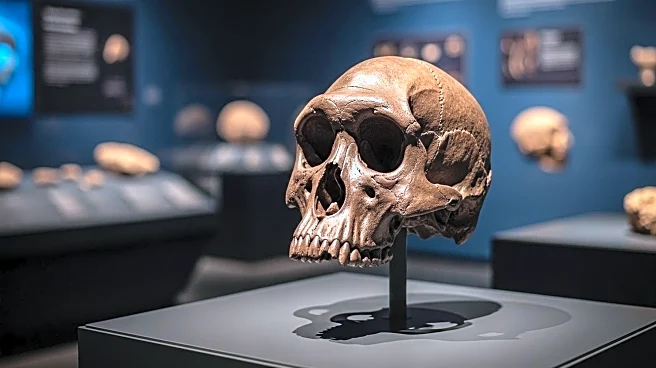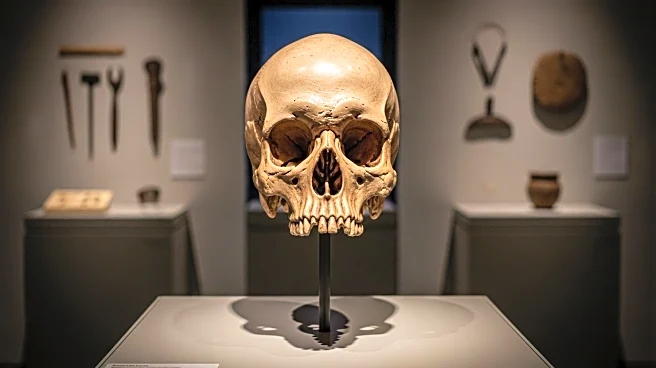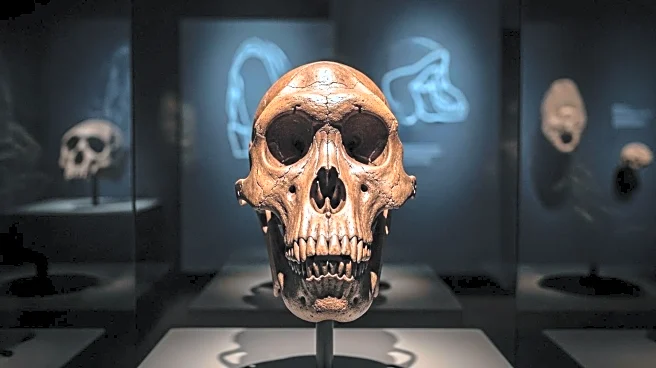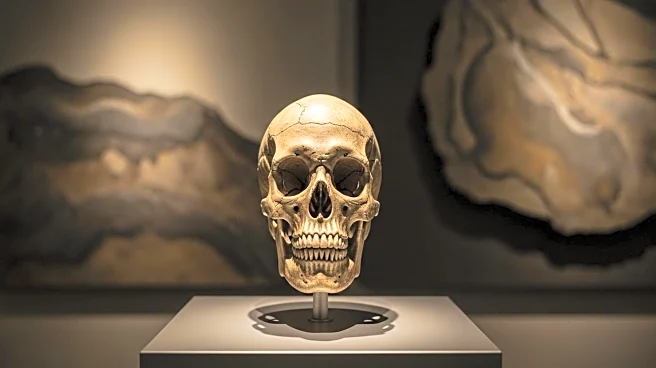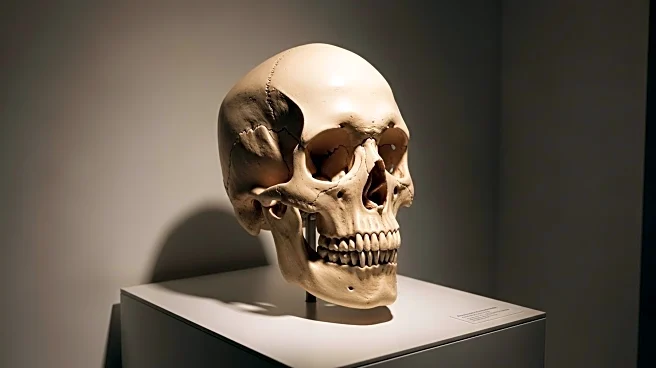What is the story about?
What's Happening?
A recent study published in the journal Science has revealed that a one-million-year-old skull, previously thought to belong to Homo Erectus, actually belongs to an early Asian hominid line known as the Denisovans. The skull, dubbed Yunxian 2, was discovered in 1990 in Hubei province, China. Researchers from China and the UK used CT scans to digitally restore the face of the skull, which was crushed and distorted upon discovery. The study suggests that large-brained humans may have emerged hundreds of thousands of years earlier than previously believed. The Denisovans, who went extinct nearly 30,000 years ago, were first identified in 2010 through DNA evidence. The traits of the skull, including a large cranial capacity and specific bone structures, align with the Homo longi clade, a species as advanced as Neanderthals and Homo Sapiens.
Why It's Important?
This discovery has significant implications for our understanding of human evolution. If the analysis is correct, it suggests that large-brained humans appeared on the scene half a million years earlier than previously thought. This could lead to a reevaluation of the timeline and geographical origins of human evolution, potentially shifting the focus from Africa to Asia. The study also indicates that Denisovans, Neanderthals, and Homo Sapiens may have coexisted a million years ago, which could provide insights into the interactions and evolutionary pressures faced by these species. The findings challenge existing theories and could prompt further research into the evolutionary history of humans.
What's Next?
Researchers are likely to continue testing and verifying the results using various models and methods to ensure accuracy. The study's co-author, Chris Stringer, suggests that there may be undiscovered one-million-year-old Homo Sapiens fossils, which could further illuminate the evolutionary timeline. Additionally, scientists may investigate the environmental factors, such as severe cold events, that could have catalyzed rapid evolutionary changes among these species. The study's findings may lead to new archaeological expeditions and research focused on uncovering more evidence of early human species in Asia.
Beyond the Headlines
The study raises questions about the methods used to determine the age and species of ancient fossils, highlighting the challenges in accurately dating evolutionary events. The potential shift in the origin of Homo Sapiens from Africa to Asia could have cultural and historical implications, influencing how we understand human migration and adaptation. The discovery also underscores the importance of interdisciplinary collaboration in archaeology and genetics to unravel complex evolutionary histories.
AI Generated Content
Do you find this article useful?
